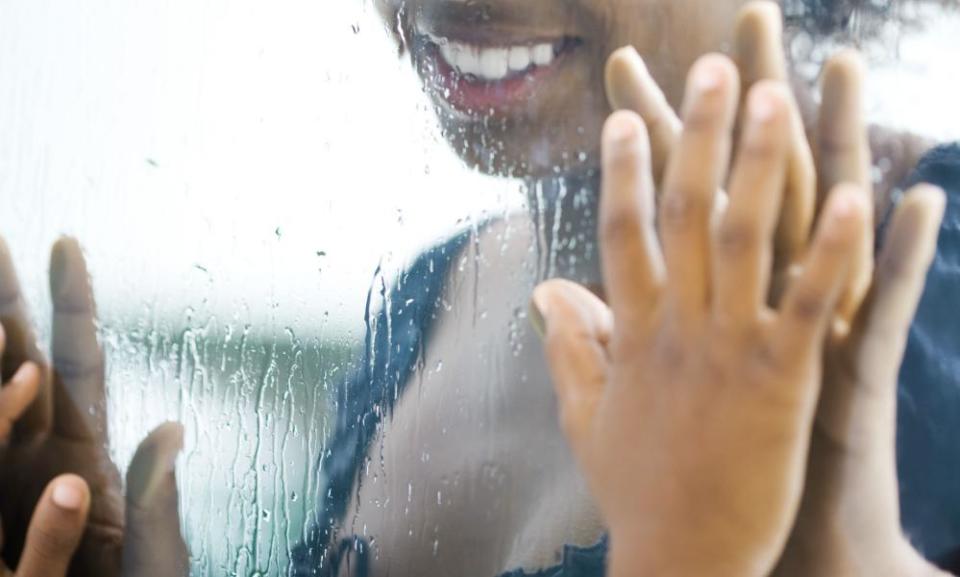Can we hug? How to navigate physical distancing as lockdowns ease

Two months ago, the rules were tough but clear. Stay home. No visitors. No hugs or physical contact with people outside your house. Now, with restrictions lifting, what was once black and white is a patchwork of shades.
People are making difficult decisions around visiting family and friends. Who makes the cut? How many is too many? Who gets a hug and who doesn’t? Some are choosing to hug – or impulsively hugging in the moment – and then feeling confused or guilty about it.
What are the actual rules?
In public spaces, many states have physical distancing requirements. While there are no restrictions on contact between people who live together or on home visitors, the Australian Medical Association advises we “avoid handshakes, hugging and kissing” anyone we do not share a home with.
Australia’s deputy chief medical officer, Prof Michael Kidd, has said “the recommendation is still there about maintaining the 1.5 metres”, even for visitors in your home. This is especially important for elderly people, middle-aged people with chronic health problems and others who are immune-compromised. “If these are our loved ones, [you can protect] them by not coming in and giving hugs.”
Victoria’s chief health officer, Brett Sutton, has said the decision to hug visiting family “is up to you”. “I wouldn’t be doing it … there must be circumstances though, where it’s really important for an individual,” he said.
Set your boundaries
“One of the things that’s difficult about this is that there isn’t a one-size-fits-all [rule],” says the psychologist and Australian National University lecturer Amy Dawel. “Every family is different, and they’re all going to make different decisions.”
“What I would encourage people to do is spend a bit of time by themselves before they talk with older relatives,” Dawel says. “[Think about] what boundaries you want to maintain and how you see that potentially working.”
It’s helpful to set a practical plan, before emotion kicks in. “One of the important things is identifying physical space that makes [distancing] possible,” Dawel says. “That can help take some of the stress out of it.” If you have kids, outdoor spaces might be easier – especially when public playgrounds reopen. If you’re meeting for a meal, think about seating arrangements. Is there a table big enough to allow space between each person?
When you speak to your family, Dawel says, aim to be “patient, kind and gentle – but also firm”.
Listen to your relatives
When social distancing measures were first announced, many young Australians said their older relatives were “way too relaxed” and going out too much. But the data – from an ongoing ANU study on mental health and behaviour during the pandemic – doesn’t fully back that up.
“The over-65s are much less worried about Covid,” admits Dawel, who is leading the study. “Across the board we see older adults doing much better in terms of mental health … But older people are reporting they’re socially distancing just as much as other people – if not more – and that they agree with those distancing measures. If anything, they’ve shown slightly stronger agreement [with physical distancing measures] over time.”
The survey, she notes, does not have data on distancing around close family, “so that could be quite different”. If an older relative insists on close contact, Dawel suggests “listening to find out what’s important to them about it”. “Can you fill this space with some other kind of connection for them? We really have to get creative and think outside the box here.”
Look for alternatives
Earlier this month Ana Bolerjack’s grandmother, 76, was feeling disconnected. She had no family near her retirement home in Virginia. So her mother, 55, decided to make the trip from Utah for one big, creative gesture … in a sanitised, inflatable hippo suit.
My mother-in-law hugging my grandmother in an inflatable hippo suit wearing a tutu is the content you needed today. Her nursing home is letting family members hug each other in these sterilized suits ❤️ pic.twitter.com/UokmU6lNtw
— Nick Bolerjack (@NickyBoler) May 13, 2020
“The amazing people at Fox Trails Assisted Living came up with the idea,” Bolerjack says. The retirement home calls the event “squish day”. “To have my mum be able to fly out and see [my grandma] and hug her made her feel so much better during this crazy time.”
This is one of many types of “hugging suits”, “hug shields” and “cuddle curtains” people are constructing to get close to their families.
But this obviously isn’t an option for everyone. If your older relative is missing this sense of touch, there are also ways of helping from a distance. Dawel suggests giving clothing – “a special gift, like a jumper of a scarf – something they can wear and connect with” as a reminder you are “with them in quite a physical way”.
If they’re missing connection, try letter writing or “kindness elves”. “There’s quite a lot of evidence that random acts of kindness help not only the person who’s receiving that kindness, but the giver.”

